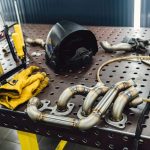Brake fluid is an essential component of any car’s braking system. Its primary role is to transmit pressure from the brake pedal to the brakes themselves. As such, its performance is crucial to your car’s safety and operation. In high-performance British racing cars, such as those produced by Triumph, the type of brake fluid you use can have a significant impact. However, it’s not always clear which type of brake fluid is best for these high-performance vehicles.
In this article, we will discuss the various types of brake fluids available, their properties, and which one is the best fit for high-performance British racing cars. This information will guide you in making an informed decision on the best brake fluid for your racing car.
Also read : How to calibrate the suspension system of a British luxury sedan for optimal comfort?
Understanding Brake Fluids
Before we delve into which type of brake fluid is best for high-performance British racing cars, it’s essential to understand what brake fluid is and why it’s important.
Brake fluid is a hydraulic fluid that transfers pressure from the brake pedal to the brake calipers, causing the brake pads to clamp onto the brake discs and slow down or stop the car. It must be able to withstand high temperatures generated by the brakes, remain liquid at low temperatures, and resist compression.
This might interest you : How often should the timing belt be replaced in a UK-manufactured sports coupe?
There are several types of brake fluids available on the market, but the most commonly used are DOT 3, DOT 4, DOT 5, and DOT 5.1. They are primarily differentiated by their boiling points and base substances, which include glycol or silicone.
Glycol-Based Brake Fluids
The glycol-based brake fluids include DOT 3, DOT 4, and DOT 5.1. They are known for their high boiling points and superior performance under a variety of conditions.
Glycol-based fluids have a high boiling point, which is critical in ensuring the fluid doesn’t boil during heavy braking, especially in high-performance cars. When the fluid boils, it generates gas, which is compressible, leading to a loss of braking efficiency or even brake failure.
However, glycol-based fluids are hygroscopic, meaning they absorb water from the atmosphere. This water lowers their boiling point and can lead to corrosion of the braking system. As a result, glycol-based fluids must be replaced regularly, typically every two years.
Silicone-Based Brake Fluids
On the other side of the spectrum, we have silicone-based fluids, primarily DOT 5. Unlike their glycol-based counterparts, silicone-based fluids are hydrophobic, which means they do not absorb water. This property makes them less prone to lowering their boiling point and causing corrosion.
However, silicone-based fluids have their drawbacks. They have a lower boiling point than glycol-based fluids, making them less suitable for high-performance cars that often reach high braking temperatures. They also tend to be more compressible, leading to a spongier brake pedal feel.
The Best Brake Fluid for High-Performance British Racing Cars
Given their need for high performance and the high temperatures generated during racing, high-performance British cars like Triumph, require a brake fluid that can withstand the heat. Therefore, glycol-based brake fluids are the most suitable.
DOT 4 fluid, in particular, is well-suited for high-performance cars. It has a high boiling point, both dry (when new and free of water) and wet (saturated with water), ensuring consistent performance even under extreme conditions.
Going Above and Beyond with DOT 5.1
However, for the ultimate in performance, especially for racing applications, DOT 5.1, a glycol-based fluid, offers an even higher boiling point than DOT 4. This fluid provides the best performance under the extreme conditions found in racing, making it the top choice for high-performance British racing cars.
Do remember, however, that these high-performance fluids require more frequent changes due to their hygroscopic nature. But for those who demand the utmost performance from their British racing cars, the additional maintenance is a small price to pay for the increased safety and performance.
A Word of Caution
While it may seem like a good idea to switch to a higher DOT fluid for better performance, it is essential to consult your car’s manual or a professional mechanic before making the change. Some braking systems, especially older ones, may not be compatible with certain types of brake fluids. Using the wrong fluid can lead to serious damage, poor performance, or even a complete brake failure.
In summary, the type of brake fluid you use in your high-performance British racing car can significantly impact its safety and performance. Glycol-based brake fluids, particularly DOT 4 and DOT 5.1, are the most suitable for these vehicles due to their high boiling points and consistent performance. However, always remember to consult a professional before making any changes to your braking system.
The Role of Boiling Points in Brake Fluid Selection
Brake fluid’s boiling point is a critical parameter to consider when choosing a formula for your high-performance British racing cars. The fluid’s boiling point will directly influence the performance of the brake system and, consequently, the safety of the car and driver.
To clarify, the boiling point of brake fluid is the temperature at which it starts to boil. When brake fluid boils, it transforms into a gas. Since gases are compressible, this can result in a spongy brake pedal and a significant loss in braking power – not what you want when you’re racing at high speeds.
There are two types of boiling points to consider: dry and wet. The dry boiling point is the temperature at which new, moisture-free brake fluid will boil. The wet boiling point is the temperature at which brake fluid, soaked with water, will boil. Over time, glycol-based brake fluids absorb water from the air, which can lower their boiling point.
High-performance vehicles like Triumphs or Austin Healeys need brake fluids with high dry and wet boiling points. It is to ensure consistent performance, even under extreme racing conditions. Glycol-based brake fluids, specifically DOT 4 and DOT 5.1, have a higher boiling point and are thus better suited for these vehicles.
Mineral Oil Based Brake Fluids and Their Compatibility
Another type of brake fluid is mineral oil-based. Unlike glycol and silicone-based fluids, mineral oil-based fluids are non-hygroscopic, meaning they don’t absorb water. This resistance to moisture absorption can, theoretically, be advantageous as it can prolong the fluid’s life. However, mineral oil-based brake fluids are not compatible with the majority of vehicles, especially high-performance British racing cars.
Compatibility is a crucial factor to consider when selecting a brake fluid. Braking systems are designed with a specific type of brake fluid in mind. Using a different type of brake fluid can lead to serious issues, including potential brake failure. For instance, if you were to use a mineral oil-based brake fluid in a system designed for a glycol-based brake fluid, it could cause severe damage to the rubber seals, resulting in leaks and, ultimately, brake failure.
Despite their potential longevity, mineral oil-based brake fluids are not suitable for high-performance British racing cars, which are typically designed to work with DOT 4 or DOT 5.1 glycol-based brake fluids.
Conclusion
Selecting a brake fluid for high-performance British racing cars shouldn’t be a decision based purely on performance. It must also take into account the car’s safety and the compatibility of the brake fluid with the specific make and model of the car.
In conclusion, DOT 4 and DOT 5.1 glycol-based brake fluids are the best fit for high-performance British racing cars due to their high dry and wet boiling points. These fluids provide consistent performance even under extreme conditions, which is exactly what you need for racing. However, they do require regular replacement due to their hygroscopic nature, which is a small price to pay for enhanced safety and performance.
Remember, always consult with a professional mechanic or refer to your vehicle’s manual before making changes to your brake system. Using the wrong type of brake fluid can lead to severe consequences, including complete brake failure. Keep the safety of your vehicle, yourself, and others on the road as your top priority when making these decisions.











